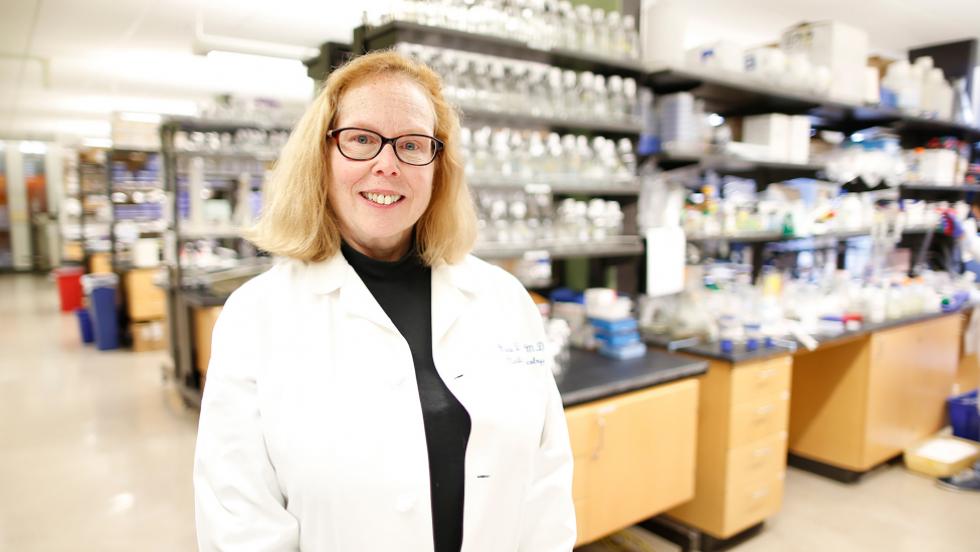Sep 19, 2019

Dr. Disis
Mary L. (Nora) Disis, MD, FASCO, is the Helen B. Slonaker Endowed Professor for Cancer Research and associate dean of translational science at the University of Washington School of Medicine, a professor of medicine and an adjunct professor of pathology and obstretics and gynecology at the University of Washington, a member of the Fred Hutchinson Cancer Research Center, and director of the UW Medicine Cancer Vaccine Institute. Dr. Disis is a member of ASCO’s Research Pipeline Workgroup and past chair of the Cancer Prevention Committee and the ASCO-SITC Clinical Immuno-Oncology Symposium Planning Committee, among numerous other volunteer roles.
How did you initially choose your current career path? Were there any unexpected detours along the way?
ND: I was interested in both medicine and research since high school. I always went out of my way to be involved with lab-based research projects in college and medical school. I was pretty directed in where I wanted to end up as a career.
Describe your typical work day.
ND: A typical work day is about 50% meetings. I meet with members of the Cancer Vaccine Institute to discuss laboratory and clinical projects or review budgets, with other staff who are working on institutional issues with which I am involved, and with internal and external collaborators. The rest of my day is spent teaching, writing (manuscripts, grants, editorials, or reviews), and analyzing data.
If you have to pick one aspect, what part of your job is your favorite? What part is the most challenging or frustrating?
ND: My favorite part of the job is evaluating data being generated on active projects. Having someone come in and overview exciting bits of a story we are trying to figure out is like doing a complex crossword puzzle. It is challenging and exhilarating and there is no better feeling than coming upon an unexpected answer to a question you posed in an experiment. Our group is filled with great people and great data puts a smile on everyone’s face.
The most challenging part of my job is managing people to work as a team. Everyone has different personalities and research can be a high-pressure type of job. Getting everyone to work together and respect each other’s talents and roles can be difficult. This is because we always have someone new joining the group—fellows, post-docs, scientists, students. That new person has to fit within a group and have a role that is fulfilling for them and those around them.
What do you wish you had known before you chose your career path?
ND: There are two things that were a surprise to me in this career. I was unprepared for how much travel was involved. Going to meetings, study sections, giving talks—you must travel to disseminate your research findings and hear what’s new in your field. When my kids were young, though, it was a big strain on our family.
The second thing was how much of a business running a lab is, and how few resources were available to help you figure it out. I learned to read the Harvard Business Review like a scientific journal. It was very helpful for giving me information on how to grow our research business.
Why would you recommend this career to someone starting out in oncology?
ND: I think research is the most exciting career anyone could have—especially translational research. Our group develops immune-oncology products to take into clinical trials. My career is totally dependent on what I make of it. Whatever I dream, I can do, or at least try to do. I feel like I am the luckiest person in the world to have this job. Every day brings something new.
What kind of person thrives in this professional environment?
ND: Someone who is self-motivated, fearless, curious, and driven.
Can you share a personal experience that shaped your professional journey and led you to where you are today?
ND: My most inspirational memories are of our patients: the people who volunteer to participate in early-phase research with no guarantee that what we do to them will have any benefit and yet there are risks which they willingly take.
I remember the very first vaccine I developed. It took a long time to get to where we were running a clinical trial and the first patient was enrolled. I must have consented our first patient for 2 hours. I was very serious about what I did not know about the risks of this approach. The patient got through the vaccine with flying colors and she was going to come back and see me in 2 days. I called her about twice a day just to see if she was okay.
On the day of her clinic visit I walked into the room and she was wearing mouse ears and whiskers. She said, “I thought you would be less nervous if I looked like the patients you usually treat.” We took a picture together in her mouse ears and whiskers, and that picture hangs above my desk. I look at her every day—to me, she represents every patient who generously participates in research. I am so grateful for their sacrifice and willingness to be on this journey with me.
“How I Became” is a series about the numerous and varied career paths in oncology. In each issue, a member will discuss their career journey and give an insider’s view of their profession. Email ascoconnection@asco.org to tell us what career paths you’d like to see covered, or to contribute to this series.
